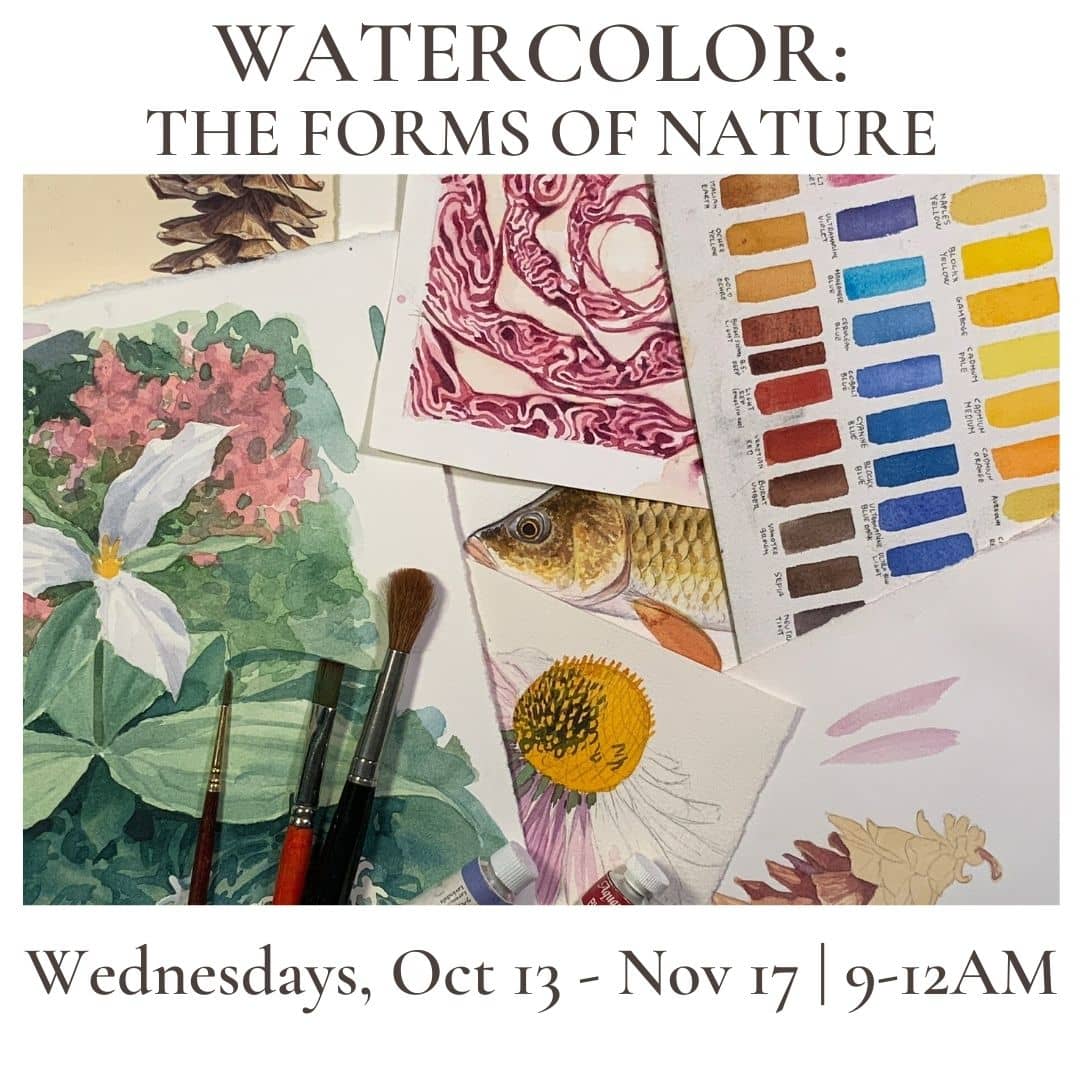Online Course - Watercolor: The Forms of Nature
The natural world is an infinite and fantastic source of inspiration for the artist, and the versatility and luminosity of watercolor make it the perfect technique for recording nature in a fresh and fun way.
In this course, the students will learn fundamental drawing and watercolor techniques, use photographic references and prepare a field sketchbook to create quick, observational sketches and studies in graphite, watercolor, pen and ink, ballpoint pen and other media with scope of exploring the subject and gather information about its characteristics.
These studies, photos and preliminary sketches, will then be then used to assist in the preparation of more detailed, finished watercolors that we will prepare during the duration of the 6 week course.
Subject matter will include flowers, trees, fruits, insects, fish, birds and more. An ideal course for those interested in both the fine arts and the Illustration field and learn how to organize a field sketchbook, turning any walk in the park, into an exciting naturalistic expedition.
In this course, the students will learn fundamental drawing and watercolor techniques, use photographic references and prepare a field sketchbook to create quick, observational sketches and studies in graphite, watercolor, pen and ink, ballpoint pen and other media with scope of exploring the subject and gather information about its characteristics.
These studies, photos and preliminary sketches, will then be then used to assist in the preparation of more detailed, finished watercolors that we will prepare during the duration of the 6 week course.
Subject matter will include flowers, trees, fruits, insects, fish, birds and more. An ideal course for those interested in both the fine arts and the Illustration field and learn how to organize a field sketchbook, turning any walk in the park, into an exciting naturalistic expedition.
Materials
Watercolor paint in tubes or pans. You can use any watercolor paint you have, but these are the recommended colors: yellow lemon or cadmium yellow light-pale, cadmium yellow medium, cadmium red medium, alizarine crimson, cobalt blue or cerulean blue, ultramarine blue, yellow ochre, raw sienna, burnt sienna, black. Blue gray by Old Holland or Lavender by Holbein can also be very useful colors to create sense of atmospheric distance or a gray-cloudy sky.
Brushes: #2, #8 and #14 round synthetic brushes, these brushes are cheap and versatile. If you can afford a Kolinsky sable brush you should buy a #8 round. The best brand is Winsor and Newton but it is very expensive. Raphael or Eskoda make very good quality Kolinsky sable brushes for much less. You also will need a 1” ½ or 2” flat synthetic or natural hair brush for washes.
Paper: a pad of 11”by 14” cold press watercolor paper by Arches, Fabriano or Winsor and Newton. You can also use any paper you like or you already have such as hot press, rag or hand made.
Sketch book: there is a great variety of sketchbooks to choose from, get one with a decent quality paper that can withstand light watercolor or water media washes size about 9”by 11” or so. You can use your favorite sketchpad if you already use one. Suggested drawing implements to use with the sketch pad include: graphite pencils HB-B-2B or so; markers, black or colored, with thin and medium points. fountain pen, pen and ink, ballpoint pen. You can start with just a couple of these and buy more as the need arises.
Finally, you will need a mixing palette, water containers, pencils, kneaded erasers, and paper towels.

